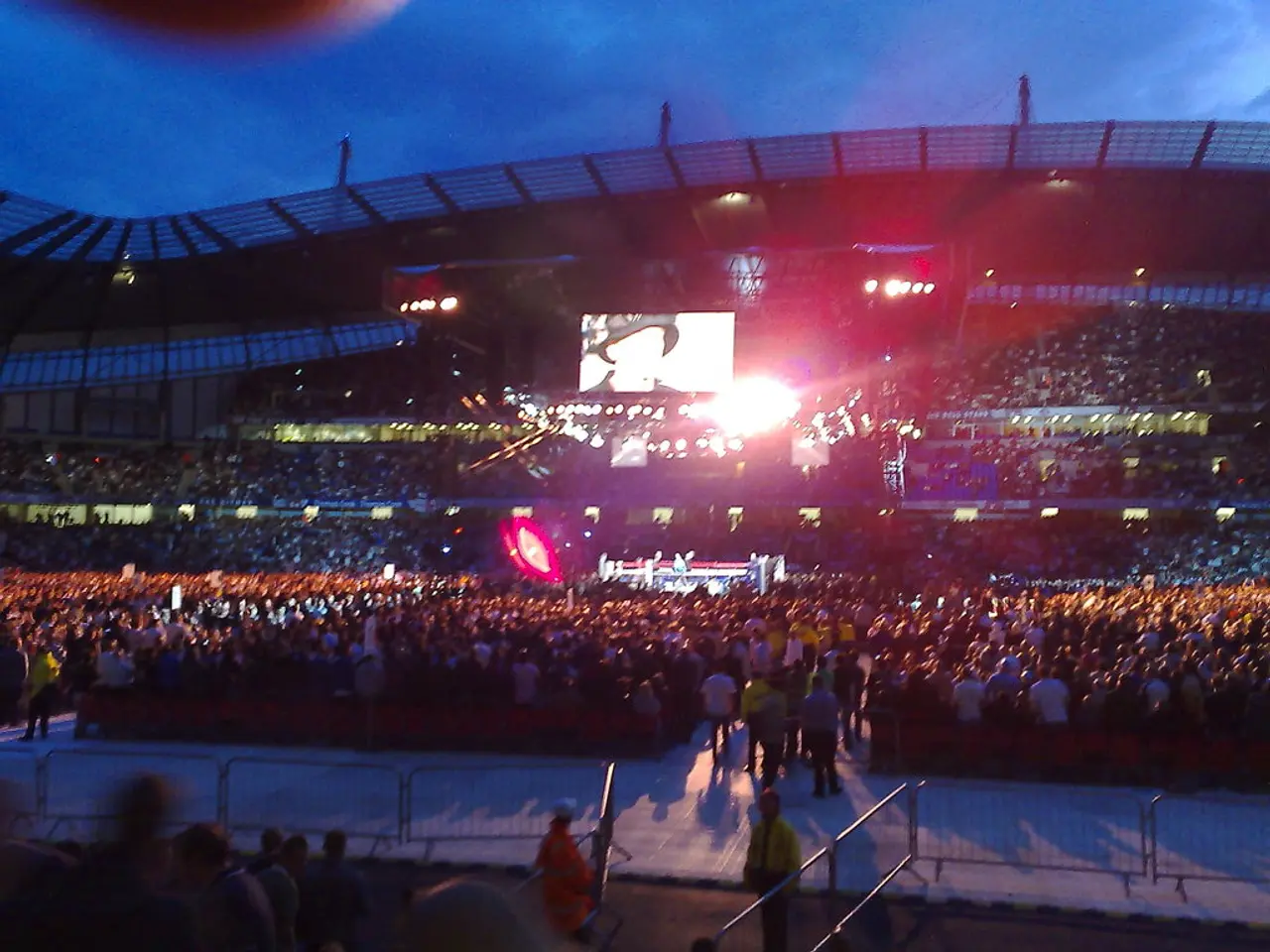Predicting Dominance of Virtual Concerts in the Music Sphere: A Possible Trend
In the ever-evolving world of music and entertainment, virtual concerts are making a significant impact, offering audiences a unique and immersive experience from the comfort of their homes.
Platforms like Wave are leading the charge, transforming performances into interactive, digital experiences that feature digital avatars and gamified elements, impossible in traditional live settings. Wave has successfully hosted over 50 events, attracting millions of viewers and audiences of up to 400,000, demonstrating strong demand that surpasses the limits of physical venues. This model also provides additional revenue streams through in-app purchases and a broader reach, particularly as ticket prices for live shows continue to rise [1].
The blending of music, gaming, interactivity, and social elements positions virtual concerts as a new category alongside live shows, rather than a replacement. Live concerts and festivals, too, are evolving dynamically, adopting data-driven approaches, AI personalization, hybrid formats combining live and digital elements, and sustainability improvements to enhance the attendee experience [2].
This suggests a future where a hybrid entertainment ecosystem thrives, with virtual concerts expanding access, scale, and creativity, and live concerts preserving the irreplaceable energy of physical presence. Virtual concerts may grow rapidly, but they are unlikely to fully outgrow live concerts, reflecting a complementary coexistence driven by differing audience needs and experiences [1][2].
Virtual concerts offer more than just watching and listening to music. With VR headsets like Quest 3s, audiences can "feel" as if they're at the concert venue, creating a more immersive experience [3]. These concerts can be filmed at concert halls, specialized studios, or even home studios. They can be live or recorded and are available on various platforms such as YouTube, Twitch, and Zoom [4]. To deliver high-definition quality, virtual concerts utilise high-end microphones, multiple cameras, and sufficient lighting [4].
Despite being a relatively new phenomenon, virtual concerts do not appear to be a mere temporary trend. Instead, they reflect a lasting shift enabled by technological advances and changing consumer preferences within a broader, evolving entertainment market [1][2]. As technology continues to evolve and consumer preferences change, the future of virtual concerts and live events is an exciting prospect, promising a blend of the best of both worlds.
References:
[1] Virtual concert platform Wave attracts millions with immersive digital experiences. (2021, March 1). TechCrunch. Retrieved from https://techcrunch.com/2021/03/01/virtual-concert-platform-wave-attracts-millions-with-immersive-digital-experiences/
[2] The future of live events: Hybrid, data-driven, and sustainable. (2021, February 22). Pollstar. Retrieved from https://www.pollstar.com/article/the-future-of-live-events-hybrid-data-driven-and-sustainable-103981
[3] Virtual reality concerts: The future of live music. (2020, June 15). Music Business Worldwide. Retrieved from https://www.musicbusinessworldwide.com/virtual-reality-concerts-the-future-of-live-music/
[4] How to stream a virtual concert: Tips for artists and fans. (2020, April 25). Billboard. Retrieved from https://www.billboard.com/articles/business/8515650/virtual-concerts-streaming-tips-artists-fans
- The integration of gaming, interactivity, social elements, and music within virtual concerts is positioning them as a new category, complementing rather than replacing traditional live shows.
- In the hybrid entertainment ecosystem, virtual concerts are expanding access, scale, and creativity, while live concerts continue to preserve the energy of physical presence.
- With advancements in technology, such as VR headsets like Quest 3s, virtual concerts can offer audiences a more immersive experience, making them feel as if they're at the concert venue.
- Virtual concerts are not just a passing trend but rather a lasting shift enabled by technological advancements and changing consumer preferences within the evolving entertainment market.




